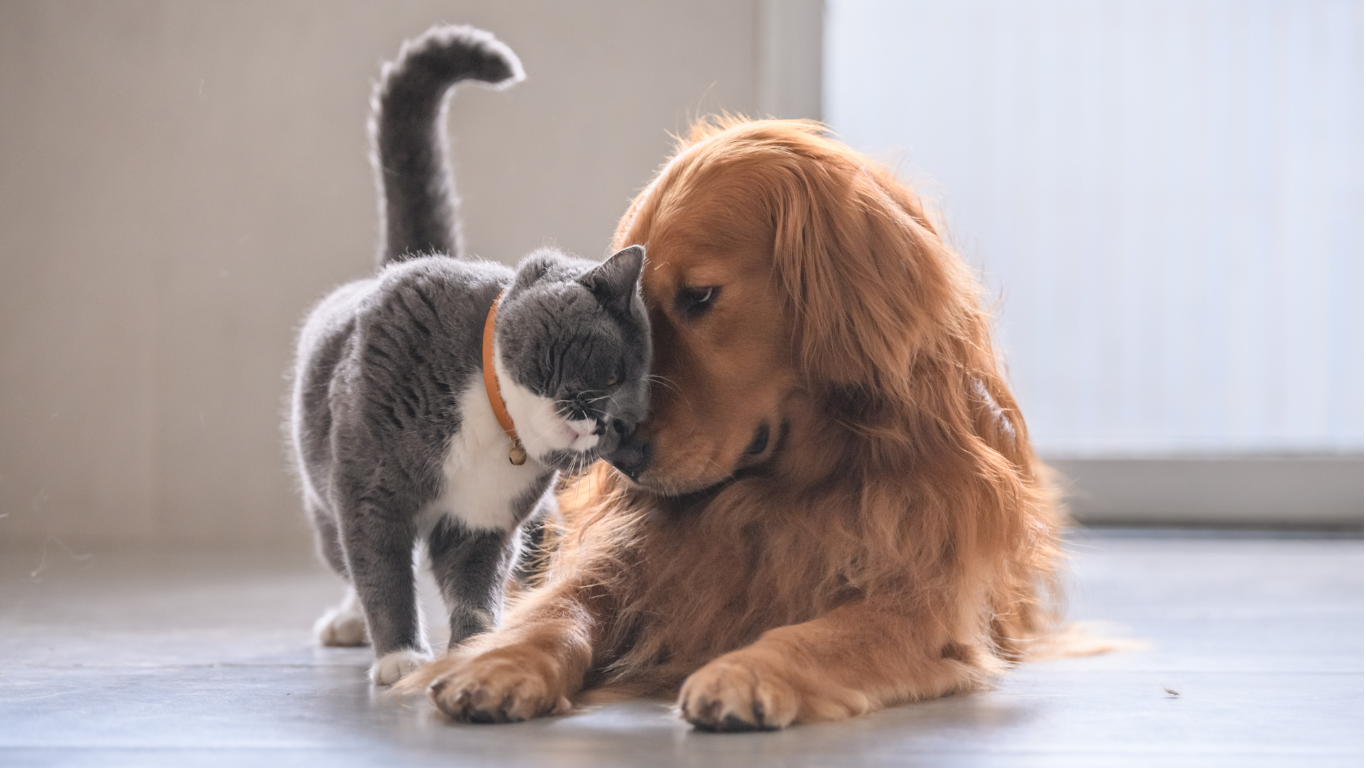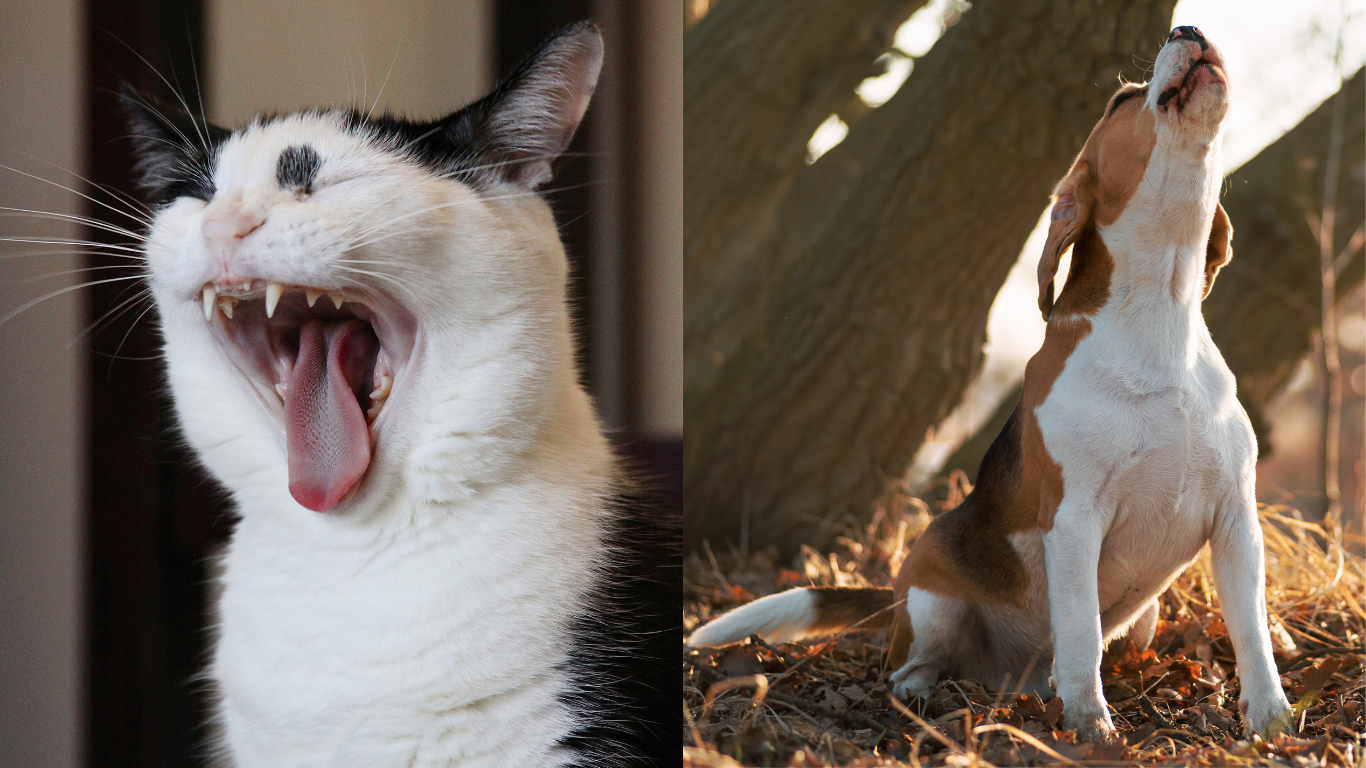Dogs and cats are very different in nature, but living together is in many cases possible and very fulfilling once a friendship has developed. If the two haven't known each other since they were little, a little patience is usually required.
How do you break the ice?
First of all, the two should be kept separate from each other so that they can get to know each other from a distance and through their noses.
You should familiarize yourself with each other's smell - the long-established animal in particular should have experience with the scent of the newcomer. Exchanging sleeping or cozy blankets with each other can help test your initial reaction to each other. (Cats will, however, most likely react to the new smell at first.) Alternatively, it can also be helpful to “rub” both of them with the same towel so that they take on each other’s smell .
The household should be kept as quiet as possible while they're getting used to it - the situation is already stressful enough for both of them and shouldn't get any more complicated. Your focus should be entirely on the animals. Both the newcomer and the long-established district defender are unsettled and need time to slowly get used to the new reality.
The first encounter eye to eye
In preparation for the first encounter, the two should be fed separately, whereby they should be able to smell and hear each other. This is how they associate the smell and sounds with the positive experience of being fed. At each meal, the bowls can then be moved a little closer together until the two can see each other without bumping into each other. A plexiglass pane or a clothes horse can help here so that the two stay separated.
When the day has come and the two are ready for their first face-to-face encounter, make sure that your two four-legged friends have a hearty meal beforehand. Full and satisfied, the two will be friendlier towards each other.
Even if it is difficult for you, the dog should wear a muzzle during the first meeting to be on the safe side. This step may require a little training if a muzzle is still unknown.
The first meeting should definitely take place in a relaxed atmosphere. Behave as usual. The dog has to learn that he is not allowed to chase his new roommate, so it can help to put him on a leash first. The cat should have an opportunity to escape and retreat at all times - a scratching post can provide a feeling of security. However, the dog should not be able to lay siege to the cat - it should be able to move freely without fear. Experience has shown that cats also feel very comfortable when they are elevated and can look at what is happening from above.
A few minutes are enough for the first meeting, which can then gradually be extended into longer meetings. It would be optimal if two people were present and one person each looked after an animal. Since dogs and cats compete for attention from caregivers, emerging jealousy can be better kept at bay. If one of your animals becomes anxious, it is better to stop the action and try again the next day. Dogs and cats don't get used to each other overnight and need a lot of time.
Who came first?
Anyone who has decided to keep a dog and cat together in the same household must first consider which of the two animals was in the household first. The natural instinct of animals is to defend their own territory.
It is usually easier to integrate a cat into an existing dog household. Dogs are pack animals and over time it becomes easier for them to accept the cat into the pack, although in breeds with a strong hunting instinct it can take longer until the cat is no longer seen as potential prey.
The best prerequisite for mutual respect is when both sides have not had any negative experiences with the other species. The dog may first have to be persuaded not to view the cat as potential prey. You should therefore plan the first encounter well and then proceed step by step. At first the different body language will irritate the animals, but with a good dose of patience the animals will learn to understand each other. For example, a dog's tail wagging happily will initially be interpreted by the cat as nervousness or a threatening gesture. Therefore, ideally, a cat should maintain contact with dogs from a young age and get used to their body language.
Of course, misunderstandings can arise with such different animals, but punishments are of little use here. It's better to reward friendly behavior with treats and extended cuddles; this is the quickest way to make living together harmonious.
Experience reports:
Bagheera & Poppy
The dog Poppy (Australian Shepherd, also known as our office dog :) ) came as a puppy to Baghira the tomcat and our colleague Barbara when she was 9 weeks old. Of course, you usually hope that the animals become best friends. But unfortunately that is not always the case. While Poppy was enthusiastic about Bagheera from the start, Bagheera is a little more reserved.
The first two weeks were very stressful and tense for Barbara. But she knew the ice was broken when Bagheera lay down and closed his eyes in Poppy's presence. As a puppy, Poppy was very careful with Bagheera - which changed a little later. During her teenage years, Poppy began to chase Bagheera around the apartment, so Barbara often had to intervene. Poppy has learned to respect Bagheera and now often wants to play with Bagheera, cuddle with him and lick him clean. Bagheera sometimes tolerates this, but usually gets up and leaves relatively quickly. Bagheera sometimes responds to requests to play. Still, it's hard to tell whether he really wants to play or whether it's too much for him.
Barbara has come to terms with the fact that the two will not be best friends and advises not to have too high expectations. Even if you follow all the tips, sometimes acceptance is a big win.

Lilly & Kira
The story was a little different with the cat Lilly and the dog Kira. Lilly came into the family because she ran away from a new dog, short-haired collie Rico, in her old family's household. She came over more and more often until she eventually moved completely and became part of the family. Since the two families knew each other well, everyone agreed and was happy with the new situation.
Some time later, the Golden Retriever dog Kira was added as a puppy (8 weeks). Lilly received the puppy very lovingly and handled Kira very carefully. They got along well from the start, although Lilly has already shown that she is the boss. After they really got to know each other, they often lay together peacefully in the basket.
So it always depends on the combination as to whether the dog and cat get along. While Lilly didn't get along with Rico at all, she was a heart and soul with Kira. It's the same with dogs and cats as it is with us humans - the chemistry has to be right.











